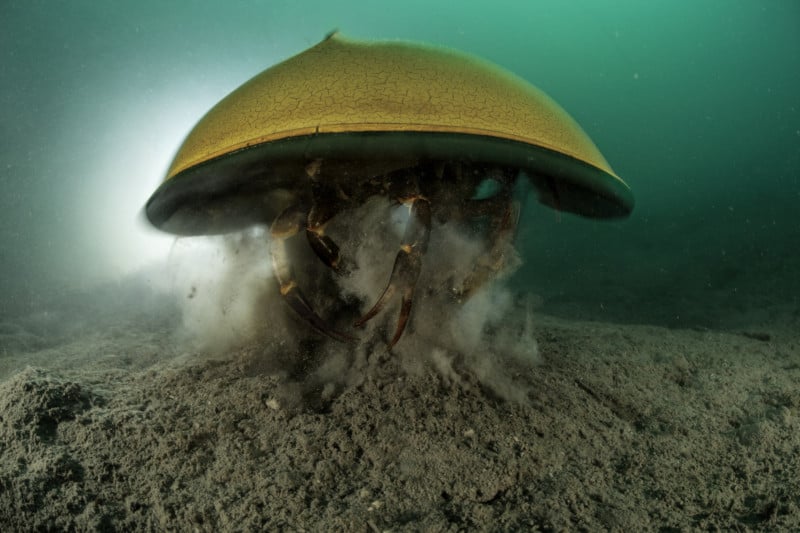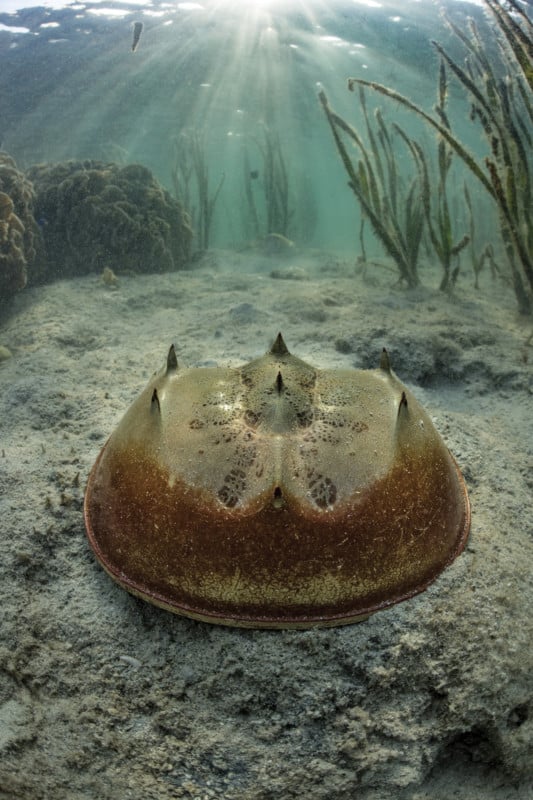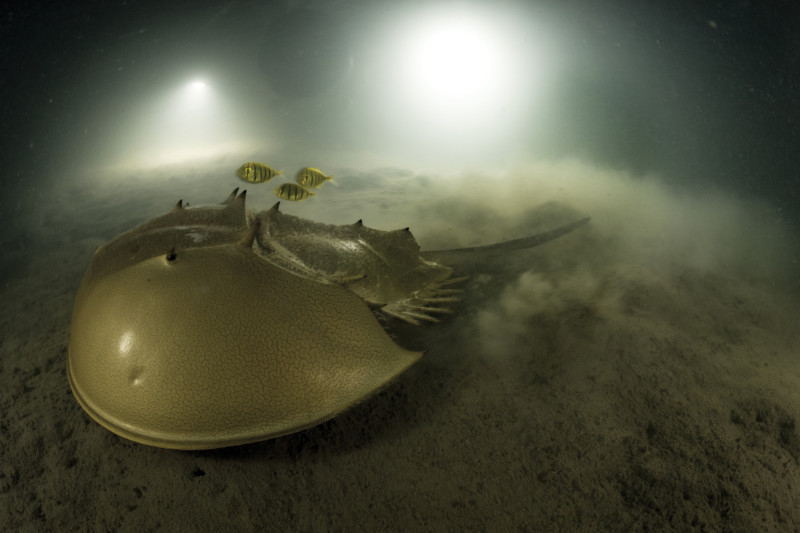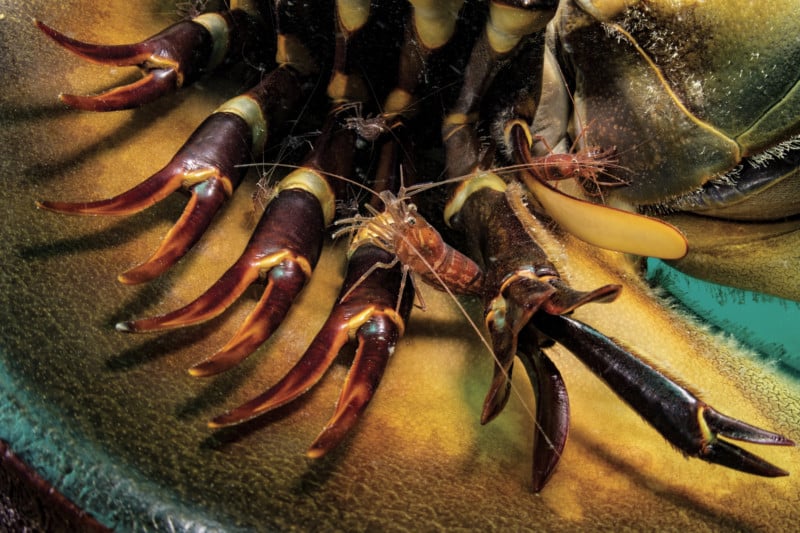A Closer Look at Horseshoe Crabs, an Ancient and Valuable Animal

Horseshoe crabs are ancient invertebrates that have existed along the ocean floor unchanged for some 450 million years. They survived the asteroid that killed the dinosaurs, but surviving humans is proving more challenging.
The August issue of National Geographic takes a closer look at these prehistoric creatures with photos, captured by Laurent Ballesta, that show them in their habitats in a way that many have likely never seen them.
Horseshoe crabs are built like tanks. Their bodies are covered in shells, they have sharp and spikey tails, and eight of their 10 legs feature sharp pincers. They have been able to withstand multiple changes to the planet over the course of the last 450 million years, but overfishing and coastal developments that have destroyed spawning sites has reduced the population of horseshoe crabs by half over the last 60 years.

These ancient creatures are hunted for food and for use as bait, but perhaps the most valuable aspect of the horseshoe crab is its blue blood: it contains a rare clotting agent that is critical for the development of safe vaccines.

In recent years, one of the crabs’ habitats in the Philippine islet of Pangatalan has been categorized as a marine protected area, and after years of severe degradation due to deforestation and overfishing that caused mass damage to the local reefs and fish species, the area is bouncing back.

This has been especially important in the last couple of years due to the COVID-19 pandemic and the need for vaccine development. While the horseshoe crab is not as cute or charismatic as an elephant or a panda, they are in no less need of protection. National Geographic says that conservationists hope that the recognition of their need will turn into stronger pushes to protect their habitats and result in wider adoption of a synthetic alternative to their blood — saving horseshoe crabs the same way they have saved humanity.
![]()
For more on this story, visit National Geographic’s website or find it in the latest issue of the magazine titled Stonehenge Revealed.
Image credits: Photos by Laurent Ballesta, courtesy of National Geographic.